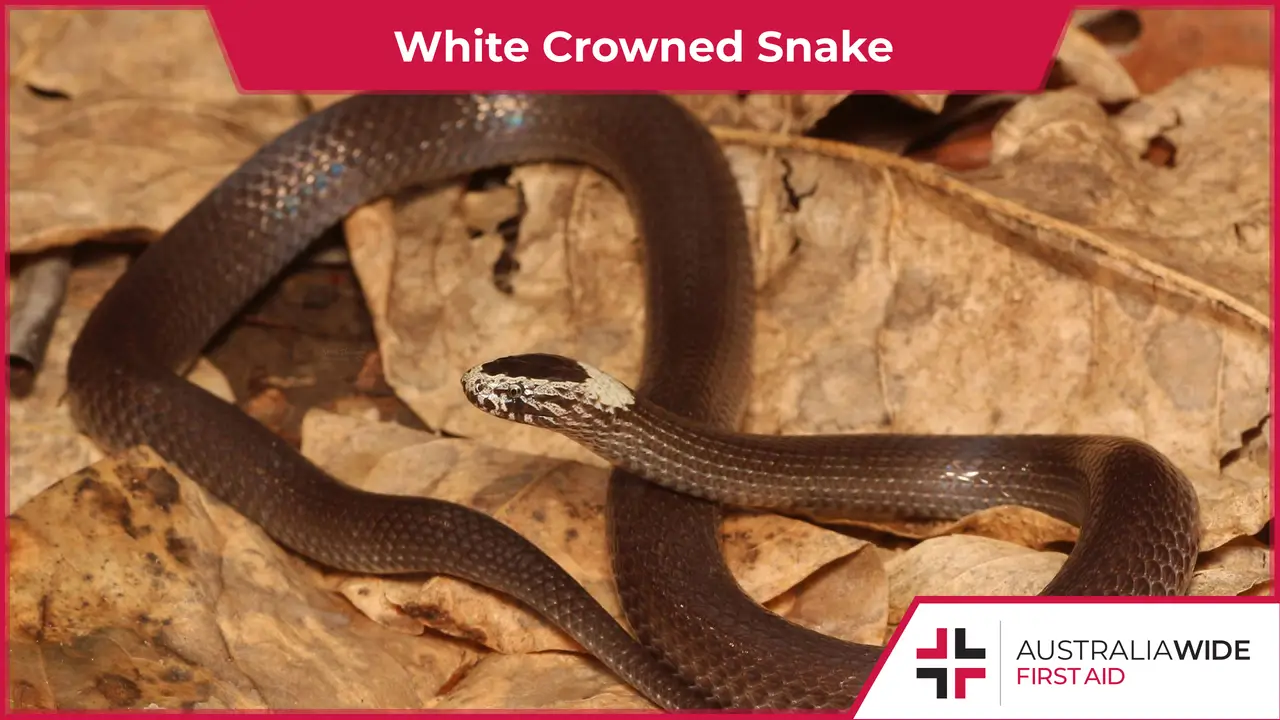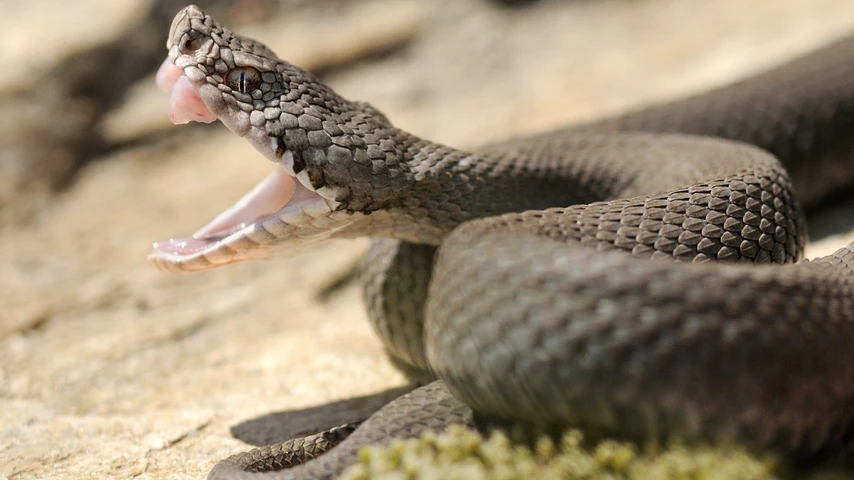All About the White Crowned Snake


The White crowned snake is one of Brisbane's most abundant smaller snake species.
As their name alludes to, these snakes have a cream coloured stripe circling their snout and neck, which gives the illusion of a crown.
It is important to be wary of White crowned snakes, as they are known to thrash about wildly when threatened.
Continue reading for more information about the White crowned snake, including their identifying characteristics, preferred habitat, and level of toxicity.
The White crowned snake(Cacophis harriettae) typically grows to 50 centimetres long.
Apart from the cream coloured stripe on their head and neck, these snakes are dark brown to steely grey above and below.
Likewise, they have a tiny mouth and short fangs.
The White crowned snake can be encountered along the east coast of Australia, from Proserpine in Queensland to northern New South Wales.
They are generally concentrated in forests, woodlands, and heathland, where they generally shelter in moist areas beneath logs, rocks, and leaf litter.
They have also been known to shelter in suburban gardens beneath compost heaps and around rockeries.
The White crowned snake is a secretive and nocturnal species.
They generally spend their nights hunting diurnal skinks and other small lizards in leaf litter.
Females give birth to eggs in clutch sizes ranging from 2 to 10.
When threatened, White crowned snakes are prone to adopting an impressive threat display, wherein they raise their body vertically and make jerky, striking motions.
However, this is mostly for show, as they are reluctant to bite and will often keep their mouths closed when striking, thereby head-butting the victim rather than biting them.
Due to the weakness of their venom, they are not considered a danger to humans. However, it is important to remember that many snake species can vary in colour, pattern, and size, and so all snake bites should be considered a medical emergency.

The White crowned snake is a small snake species distributed across part of Australia's eastern coast.
These snakes, like their closest kin (the Dwarfed crown snake and the Golden crowned snake), are largely inoffensive and spend their days sheltering beneath rocks, logs, and leaf litter.
In saying that, it can be difficult to positively identify snakes, and so all snake bites should be regarded as a medical emergency.
If you do encounter a snake at home or in the wild, you should never attempt to approach, capture, or kill it. You should contact a professional snake catcher if you need a snake relocated from your home.
For more information on treating bites from White crowns and other snake species, book a first aid course with Australia Wide First Aid today.

March 11, 2025
Darwin, the tropical capital of Australia’s Northern Territory, is home to a rich diversity of wildlife - including an impressive array of spiders. From the sprawling webs of golden orb-weavers to the cryptic camouflage of trapdoor spiders, these arachnids play a vital role in the local ecosystem. While some may inspire fear, the majority are harmless and even beneficial, helping to control insect populations.

September 4, 2024
Cat bites, while often underestimated, can lead to serious health complications if not treated promptly and properly. Cats' mouths harbour a variety of bacteria that can cause infections in humans.

April 1, 2024
Encounters with wildlife can often be thrilling, but when it comes to the creature known as the drop bear, the experience can quickly turn dangerous. A sharp increase in recent attacks prompts the need for understanding proper first aid procedures in case of an attack.